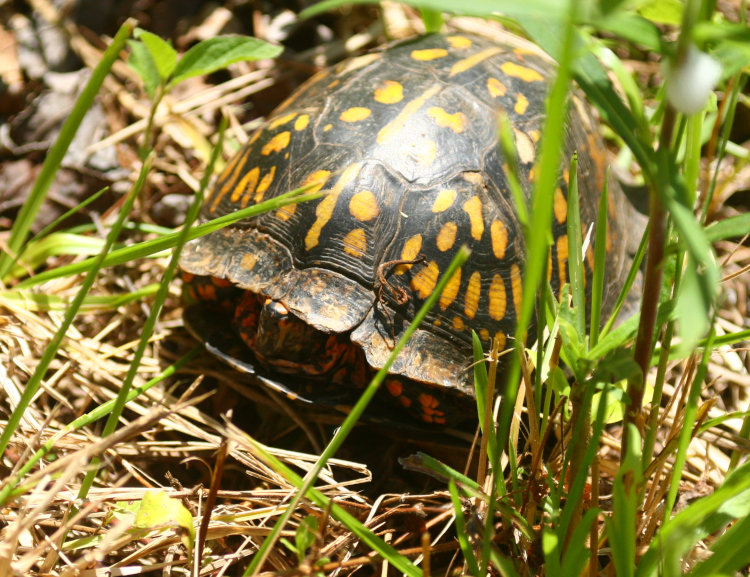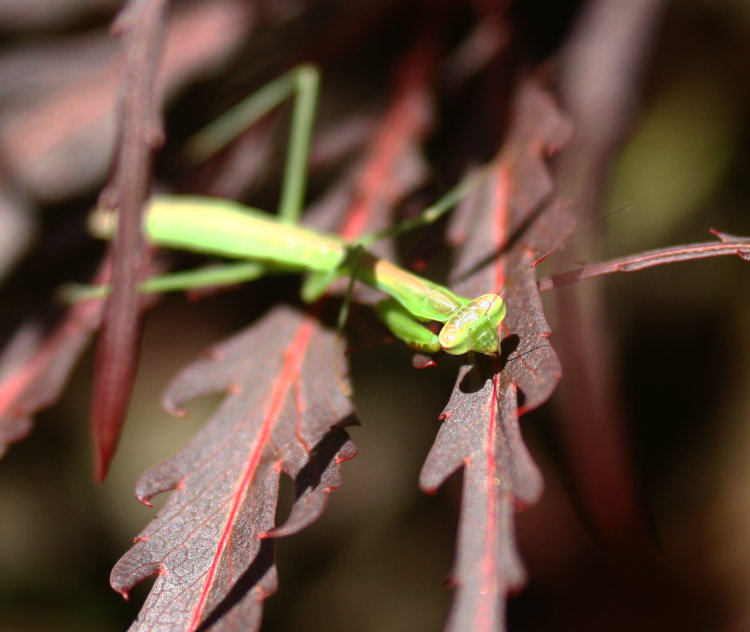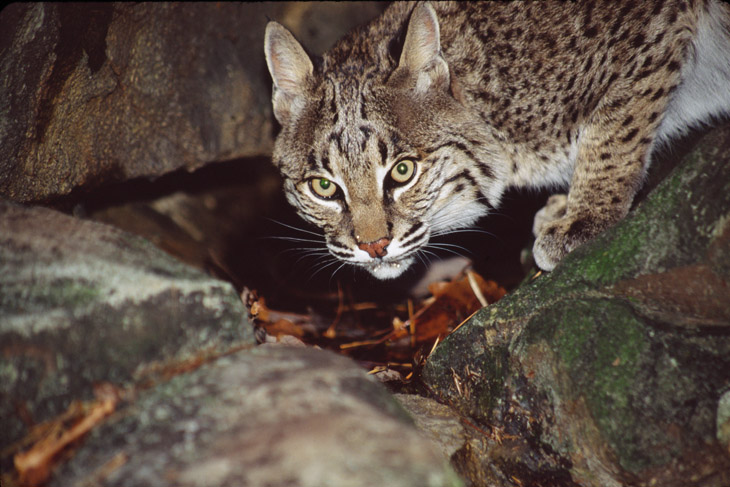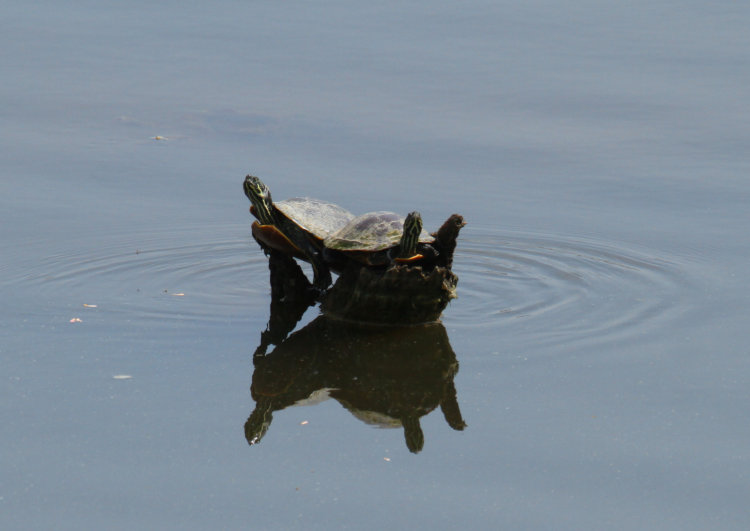While spending a few days in Tennessee last week, a wicked thunderstorm rolled through (as it did for much of the east coast,) and I made the attempt to get some lightning photos. I was borrowing my brother’s tripod since I’d left mine behind – I know this sounds like poor planning, but the trip was to drive him back up to NY since he’d injured his shoulder and couldn’t drive that far, so I’d traveled there by bus and would be returning by plane, thus my luggage load was necessities only. Yes, the camera is a necessity – what are you, stupid?
Anyway, it was well after sunset when the storm broke, though you wouldn’t know it from some of the photos.

We were deep in the Great Smokey Mountains – or is that the Blue Ridge Mountains? – near the NC border, but it wasn’t as dark as you might imagine, since everyone there had decided they needed streetlights in their yards. All of this light, however, came from lightning within the clouds, quite a light show. There was a distinct mountain peak quite close by, and I was holding out hope that a bolt would strike it because I’d have a front row seat – we were safely under the porch overhang, at least until the rain began driving sideways.

The peak in question is the tallest one off to the left there, not looking like much here because of both the wide-angle perspective and the fact that it’s blending in with the others nearby, but I was later to determine that it was just under 2 kilometers distant and fairly steep. The sharper one to the right of it, under the telephone pole, is only 250 meters further off. But wires everywhere – not a nature photographer’s ideal locale for sure.

Only a slightly different angle here, as the rains started (note that the peaks were invisible to me when aiming the camera, shrouded in total darkness because the sky behind wasn’t even lighter – the lightning was the only thing that defined details, and my eye wasn’t up to the viewfinder at those moments.) But you can see the haze from the rain starting to shroud the mountain, and again, this is only in millisecond bursts from the lightning. It got worse, though.
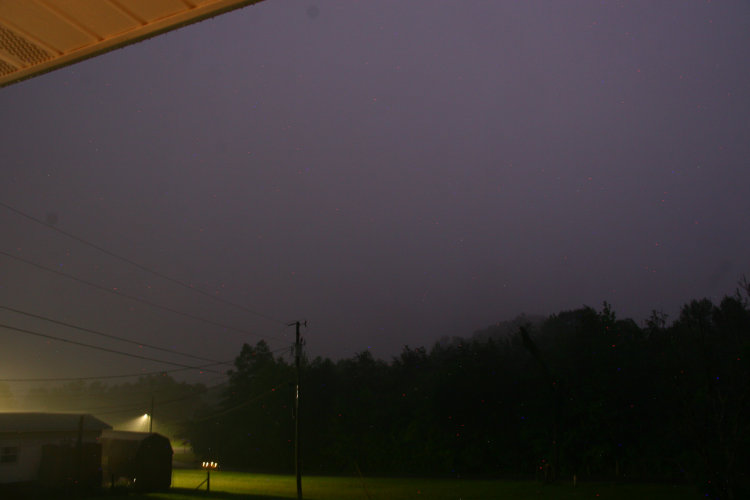
Annnndddd now it’s gone completely, hidden entirely by the rain. I have to note that, despite a lot of strikes in the area, the thunder didn’t indicate that any of them were particularly close, though certainly not far off either. You can see the porch overhang in this shot illuminated only by the interior light coming through the storm door, and that same light was now revealing the waves of rain passing between us and that neighbor – it was really coming down, is what I’m saying. Those same waves were starting to get on the camera, and so we wrapped it up about this time and headed inside, but it was clear that the brunt of electrical activity was now past, and subsequent examination of the frames revealed not one visible lightning bolt. Figures.
The next morning was sunny, and showed how the mountains got their name.

Again, this is that nearest peak (again, a bit wide-angle,) with the mists rising as the rainwater was evaporating, thus the ‘Great Smokey Mountains’ – and just a hint of the ‘Blue Ridge’ as well, the haze from all the humidity turning them more blue with distance. But let’s take a closer look at that nearby peak to the right.
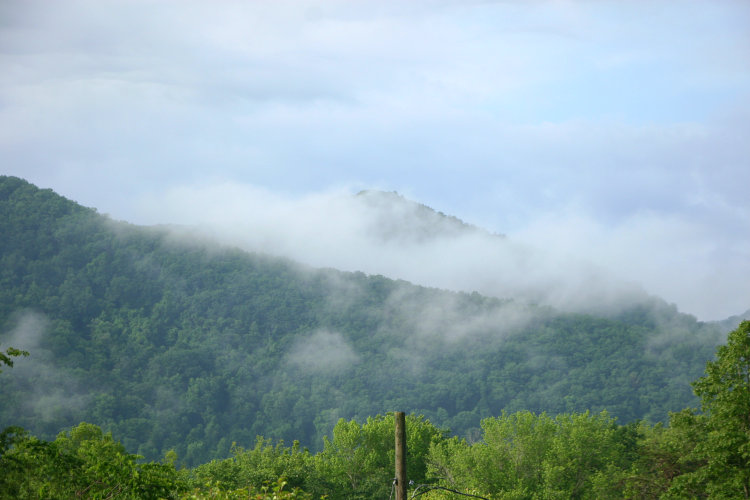
Remember, there’s only a quarter-kilometer separating these two peaks, so all that humidity is concentrated in that narrow valley – my guess is the sun just started hitting that portion. This is not a spot for decent sunrises or sunsets, both being obscured by nearby mountains, though it would be even worse for Northern Lights, since the property was on the side of a mountain rising to the north. It also bordered a large forest, to the point were black bear tracks were routinely found right behind the barn. I had the opportunity to stake out the area for potential images (my only black bear shots are at a great distance,) but passed on it for two reasons: 1, I hadn’t brought any flash at all with me, and it would take a powerful one to snag a bear at night, and 2, there was no safe location to be staking out from – any spot that had a view of the locations they visited was far too exposed, and no pic is worth risks like that. There is now a trail camera set up there, though, so maybe there will be something to show later on. We’ll see.
I’ll throw down one last shot for giggles, closing on sunset the day before the storm.

This is looking east-southeast, a bit to the left of the nearby mountain peak, and the differing colors of the clouds indicates their relative height, the white ones being taller and still getting the sunlight uncolored by the sunset angles. It also gives another hint of how many mountains surrounded us, especially since the nearby trees are already in shadow. Nothing great, but as I said, I was only snagging shots of opportunity and not actively seeking out areas for high art – just wasn’t that kind of trip.
I have a handful more from the trip coming along, but first we must deal with the end of the month.






























































